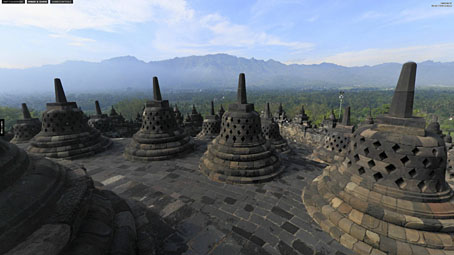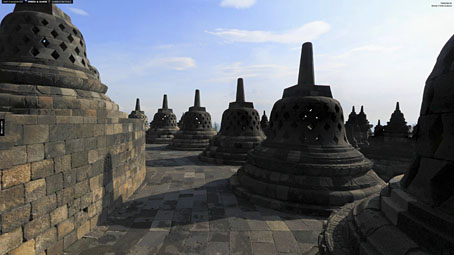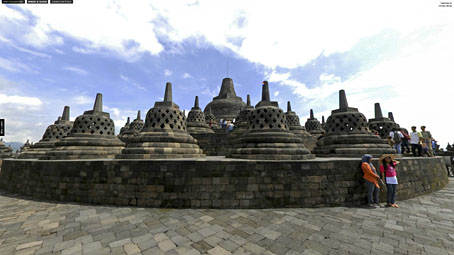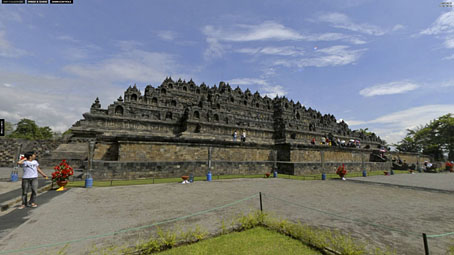Photo by Ursula & David Molenda.
Panoramas of Borobudur, the Buddhist monument in Magelang, Central Java, which lay undisturbed and overgrown for centuries until restoration began following the British occupation of the island in the 19th century. The bell-like structures are stupas, many of which contain statues of the Buddha in different symbolic postures. The entire monument is a complex three-dimensional map of the Buddhist cosmology: pilgrims ascend from the lowest level reading the bas-reliefs and visiting each Buddha in turn. Wikipedia has a detailed account of both the history of the monument and its meaning as a piece of religious architecture.
Photo by Ursula & David Molenda.
Photo by Lanang Lintang.
Photo by Lanang Lintang.
Elsewhere on { feuilleton }
• The panoramas archive





John, great to see this new images. Two comments – of course the colonial power was the Netherlands, not Britain. Second, it is interesting that the Netherlands Indies colonial state launched extensive archeological surveys of places like Borobudur in order to, what Ben Anderson calls, ‘museumise’ cultural artifacts, and thus add a kind of cultural depth to the Indische state. These efforts along with techniques like mapping, territorial delimitation, and censuses played a part, arguably, in the construction of new notions of the ‘nation’ that in turn formed part of new nationalist discourses constituting ‘Indonesia’.
Re: the history of Java, I was going off this entry:
http://en.wikipedia.org/wiki/Borobudur#Rediscovery
which dates the renewal of interest in the site from the brief period of British occupation.
John, your efforts to background entries is admirable, but wikipedia is just so unreliable and uneven – and from a scholarly point of view – contestable. For instance, the entry you rely on has virtually no Dutch sources and seems Brito-centric. By contrast, a recent influential reader published by Duke UP, ‘The Indonesia Reader’ has a short, telling aside re: Borobudur: ‘When Europeans “found” the structure in the mid-eighteenth century, it took on a very different meaning as a place of pilgrimage and connection with Java’s vaunted classical past’ (p55). This well pre-dates Raffles’ staffs’ alleged rediscovery during the short interregnum of British authority on Java while the Dutch Republic was under French rule.